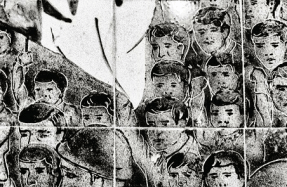Father Figure

The Japanese photographer Masahisa Fukase is best known for his celebrated photobook (1986), a work in which he projected his sense of isolation and sadness, arising from his 1976 divorce, onto the figures of ravens. More than thirty years have passed since the publication of , and it is still lauded as one of the most monumental achievements of Japanese photography. But in 1992, Fukase suffered a traumatic brain injury that brought an end to all of his creative endeavors; it also resulted in the greater part of his photographic works, excepting , falling into oblivion for the next twenty-five years. Considerable scope remains for reassessing what Fukase was trying to accomplish in the course of his forty-year-long career as a photographer. Two works made over long stretches of his life, (1971–89) and (1971–87), are essential for any understanding of his photographic art.
You’re reading a preview, subscribe to read more.
Start your free 30 days





